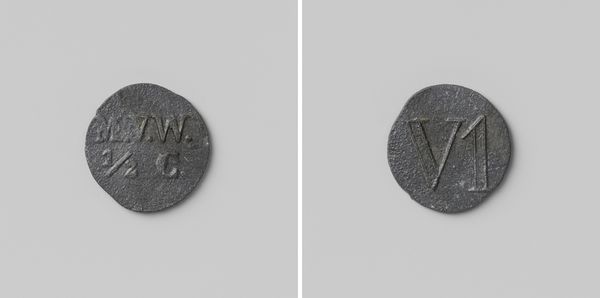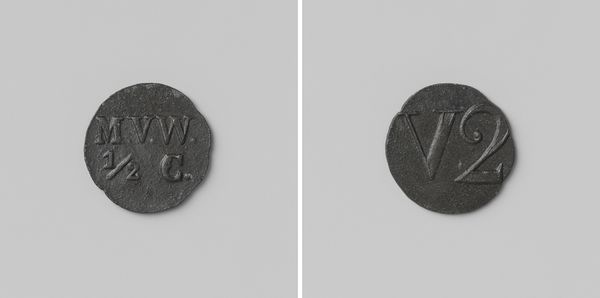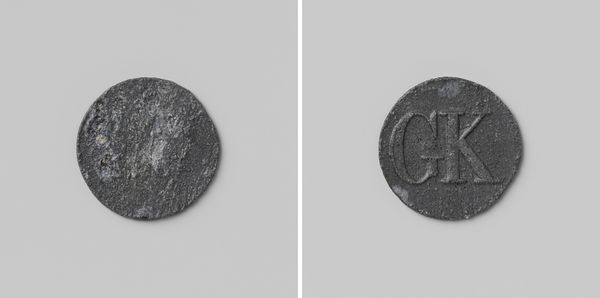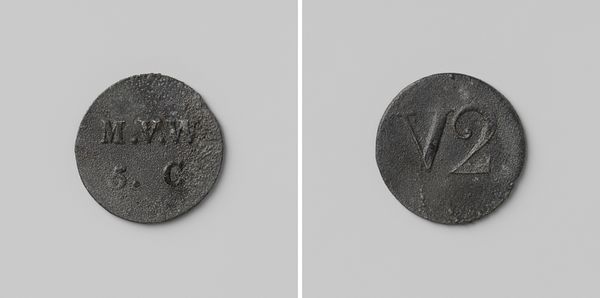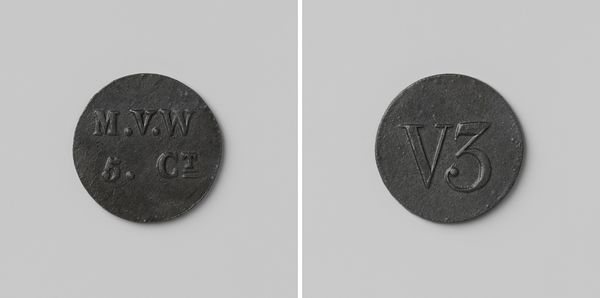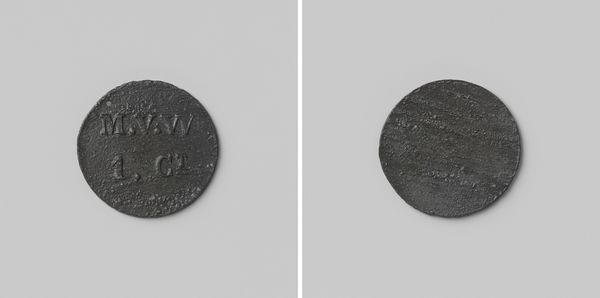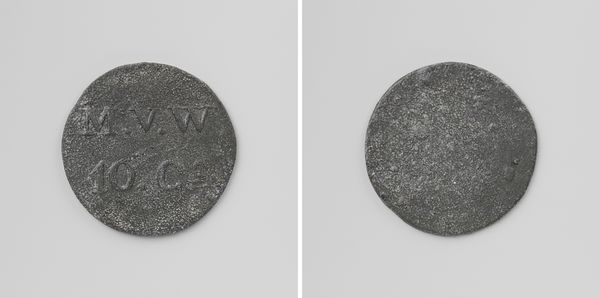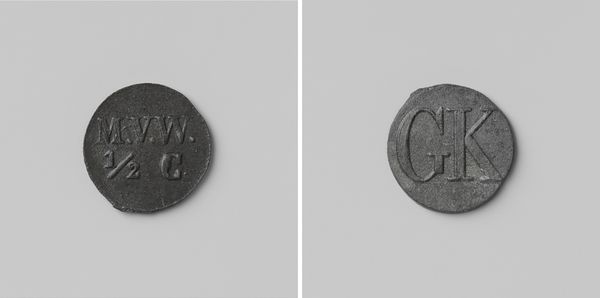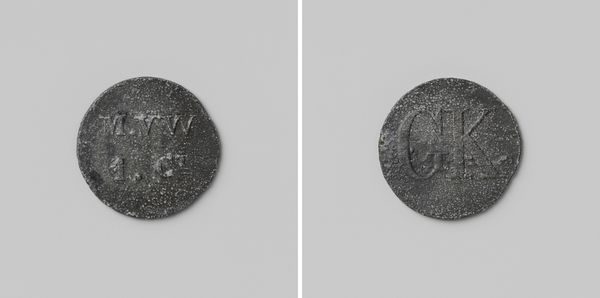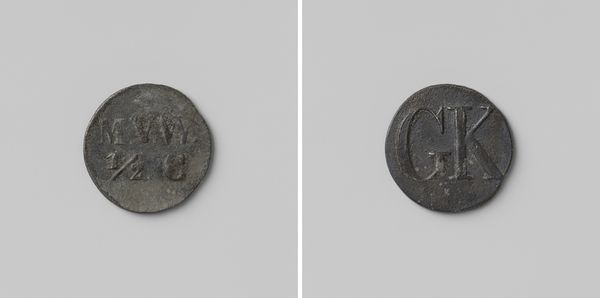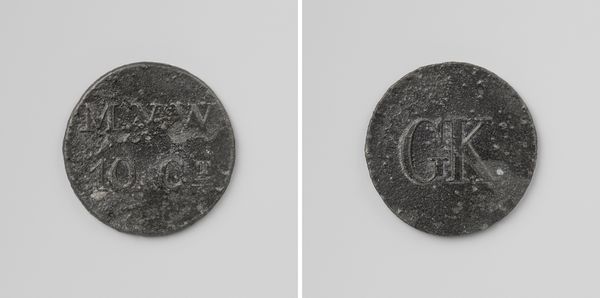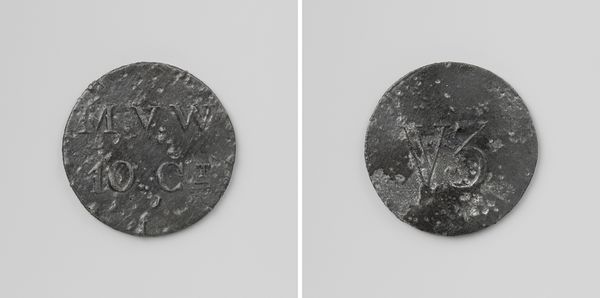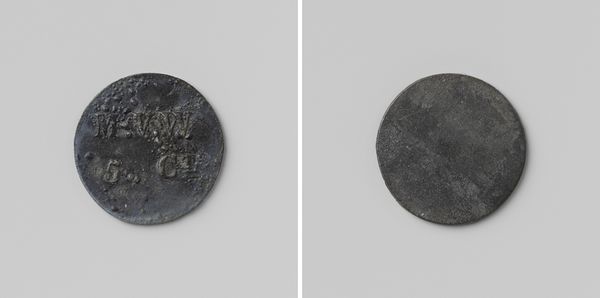
Eerste gesticht van de strafkolonie Veenhuizen, huismunt geslagen op last van de Maatschappij van Weldadigheid ter waarde van vijf cent c. 1818 - 1859
0:00
0:00
print, metal, relief
#
dutch-golden-age
# print
#
metal
#
relief
#
appropriation
#
decorative-art
Dimensions: diameter 2.2 cm, weight 2.46 gr
Copyright: Rijks Museum: Open Domain
Editor: This object is a house coin, "Eerste gesticht van de strafkolonie Veenhuizen, huismunt geslagen op last van de Maatschappij van Weldadigheid ter waarde van vijf cent," made anonymously sometime between 1818 and 1859. Looking at its metallic relief, its muted color makes it look like a relic, but I'm unsure of its context. What story does this little coin tell? Curator: This coin speaks volumes about the intersection of philanthropy, social control, and early capitalism. The Society of Benevolence, the "Maatschappij van Weldadigheid," aimed to alleviate poverty but often employed methods that further marginalized the vulnerable. This five-cent token represents labor within a penal colony. Editor: A penal colony? Curator: Yes. Veenhuizen wasn't merely a place of refuge; it was a space of forced labor and social engineering. The coin, therefore, becomes a symbol of the inmates' coerced productivity, their bodies commodified. What does the act of creating a specific currency for this place do you think? Editor: It almost isolates them further, like creating a society within a society, controlling not just their labor, but their economy, too. It must have increased control of those who ran the institution. Is this meant to carry value, beyond the penal colony? Curator: Precisely! This currency, specific to Veenhuizen, reinforces a closed system, a controlled environment where inmates’ mobility and autonomy were severely restricted. It's a powerful object when you consider the carceral system. What are your thoughts on its social role and its inherent power dynamics? Editor: It's unsettling. It's an example of decorative art intertwined with a dark history of social control. A reminder that good intentions can sometimes pave the road to exploitation. It makes me reflect on who benefits from such systems and how easily power can be abused. Curator: Exactly! This object is not just a coin. It encourages us to think critically about power, philanthropy, and the systems we perpetuate, sometimes unknowingly.
Comments
No comments
Be the first to comment and join the conversation on the ultimate creative platform.
